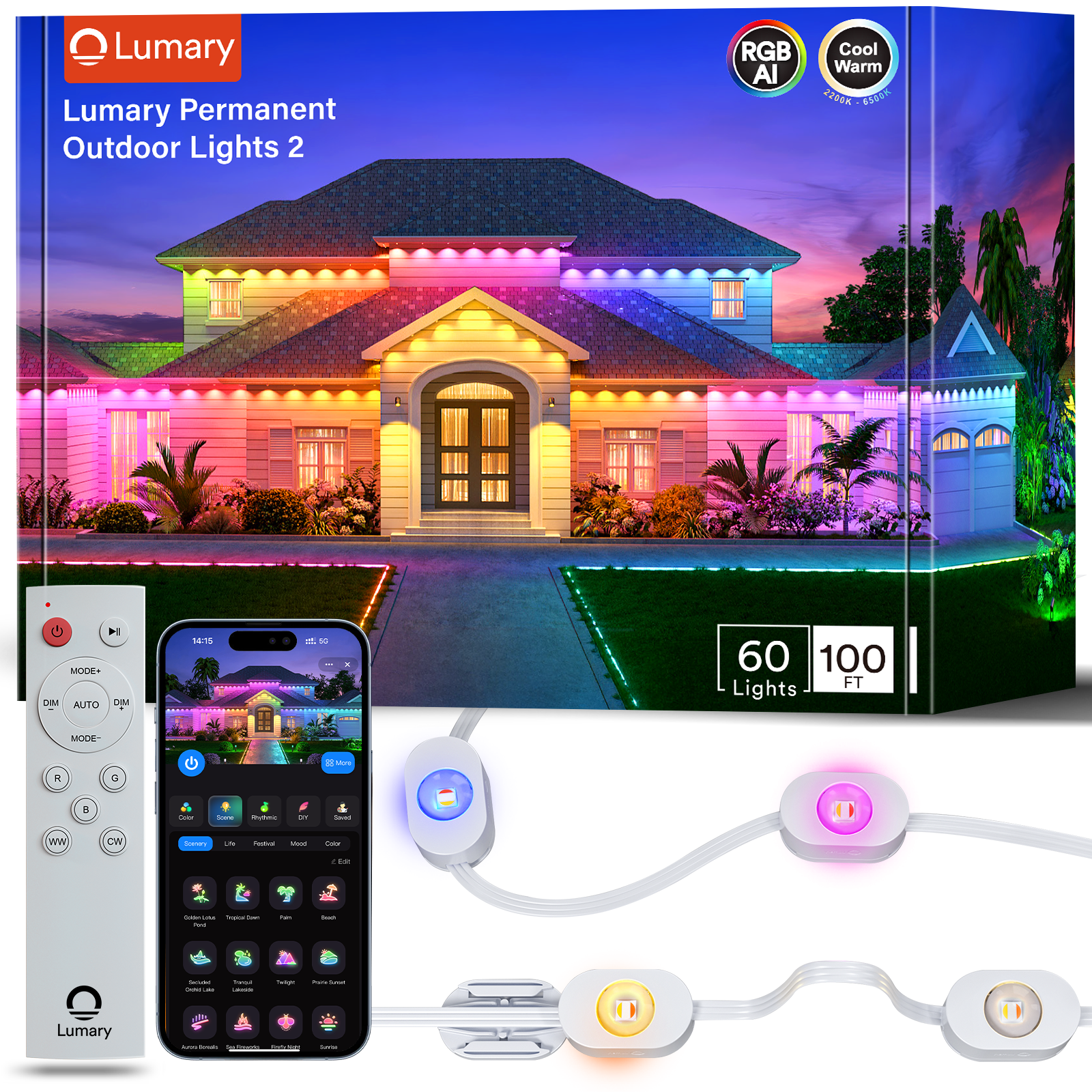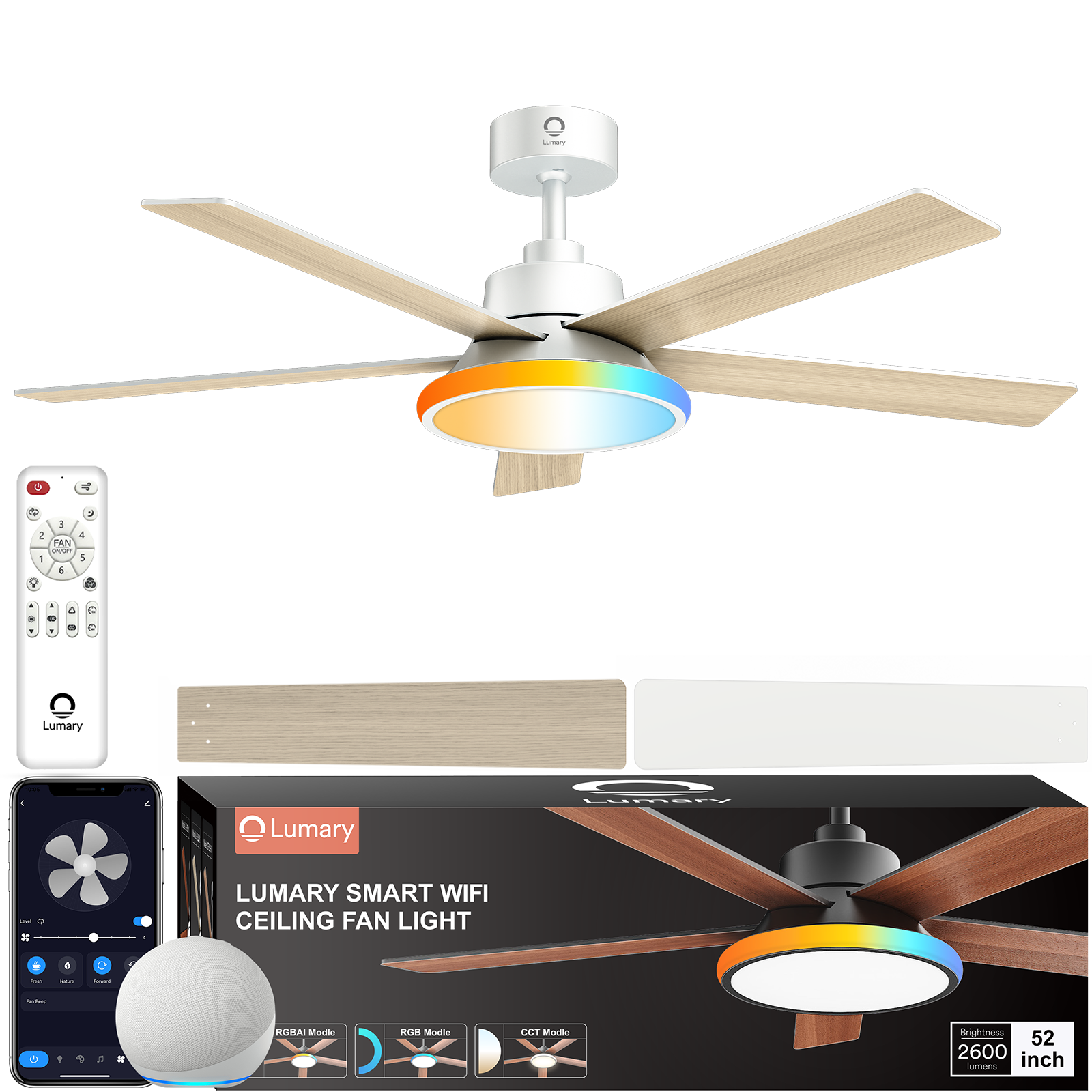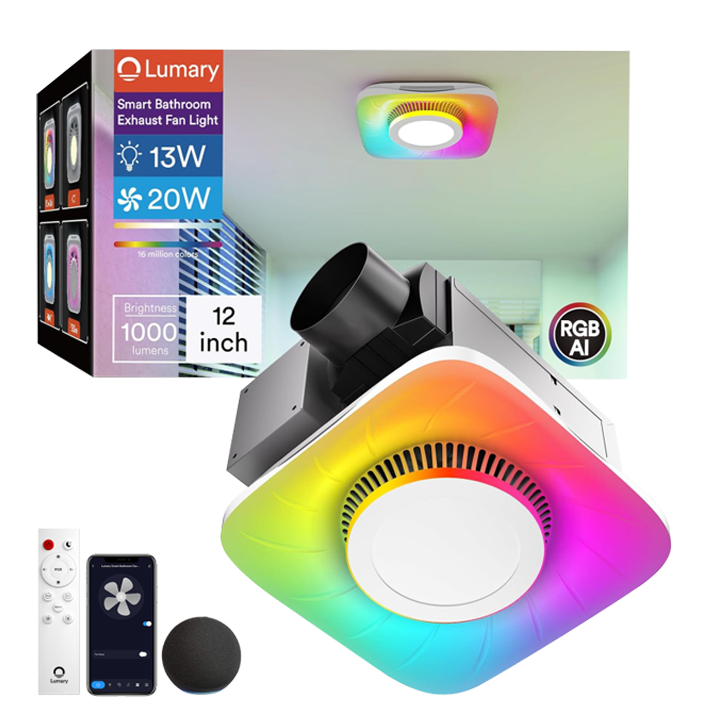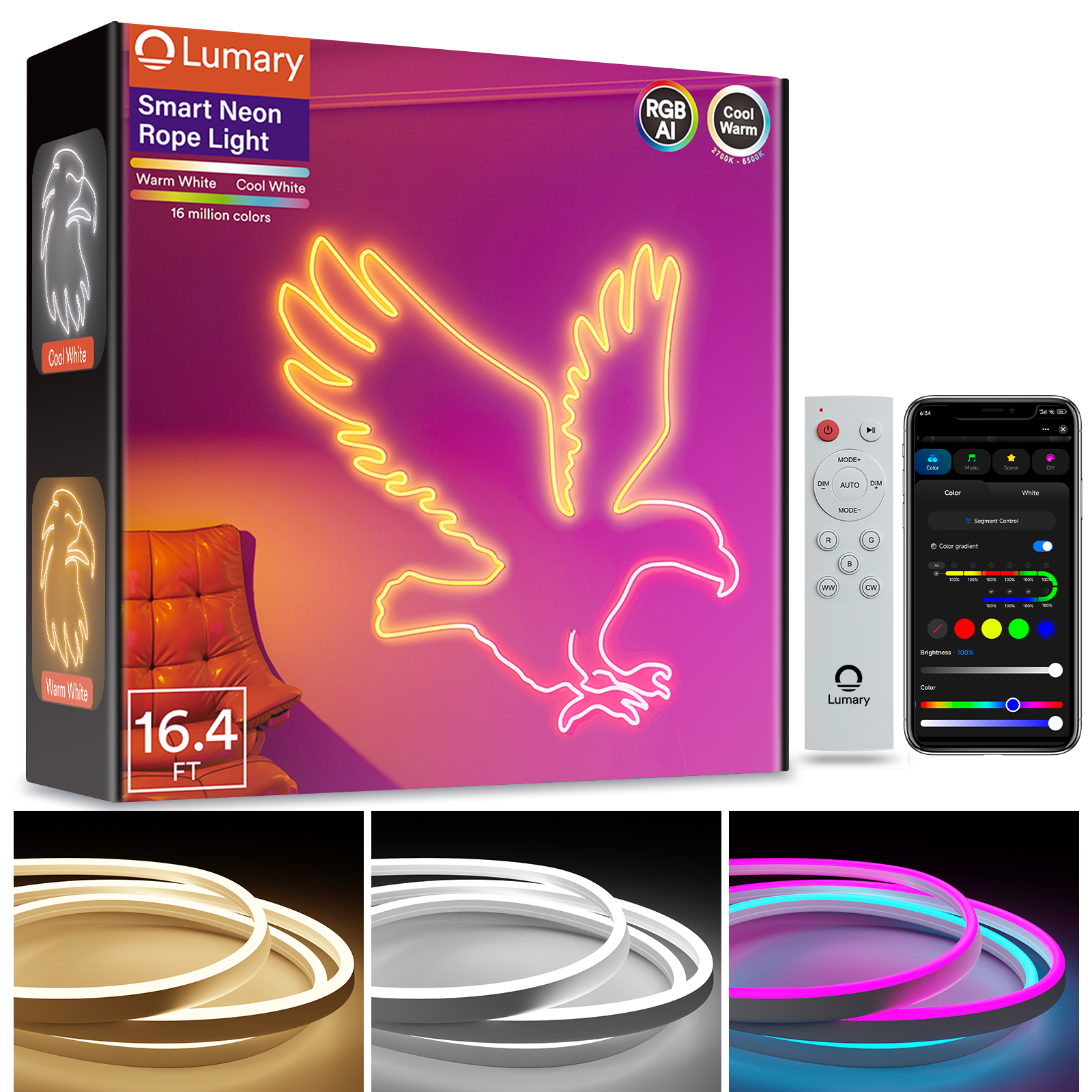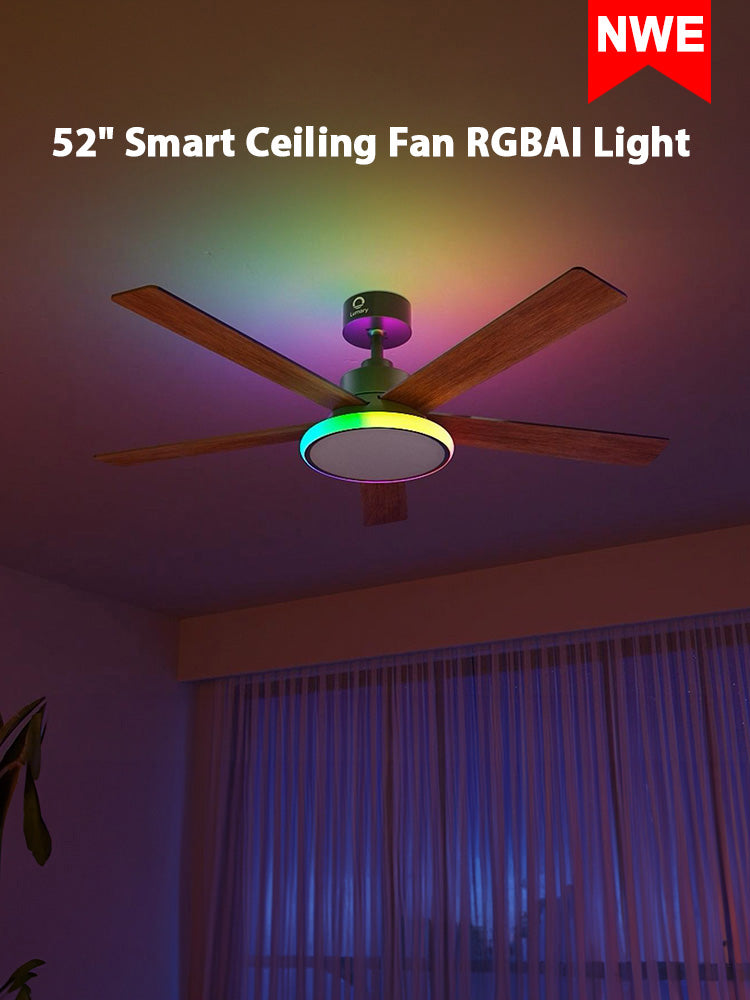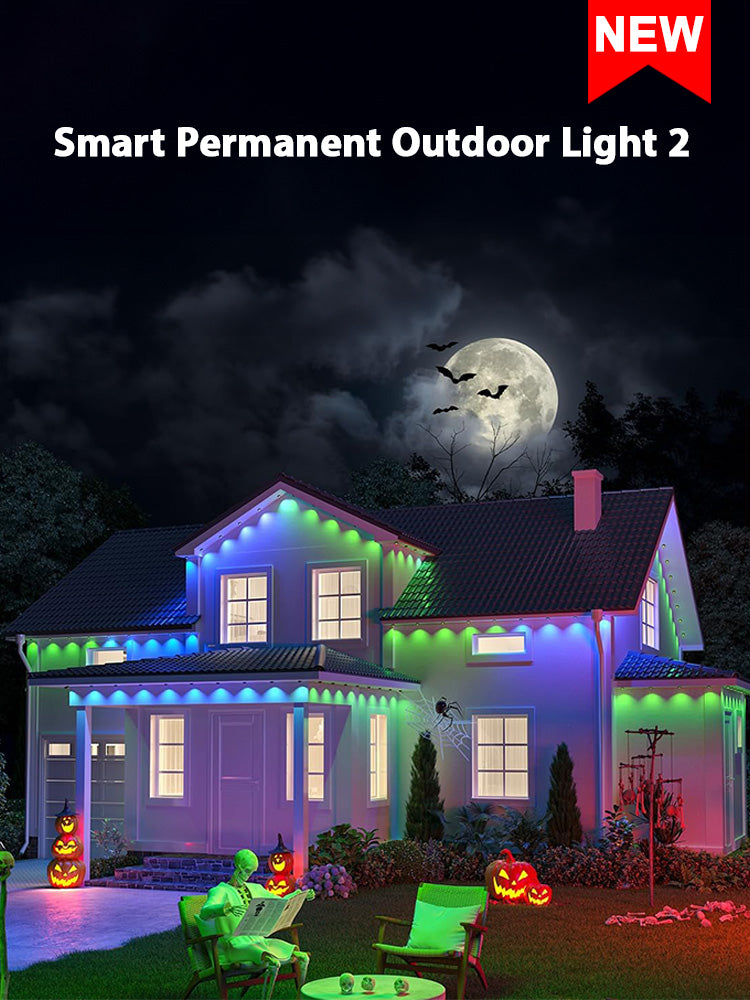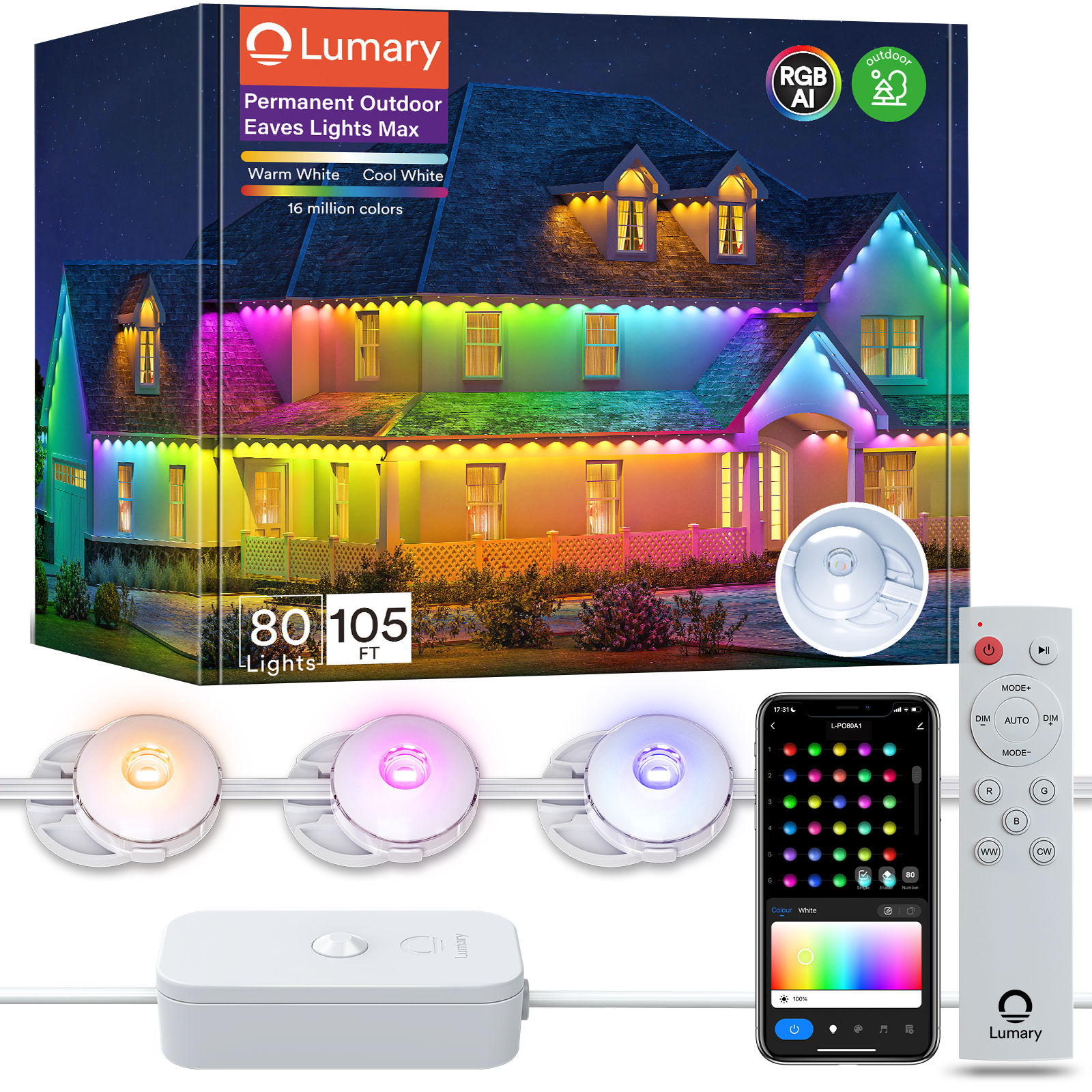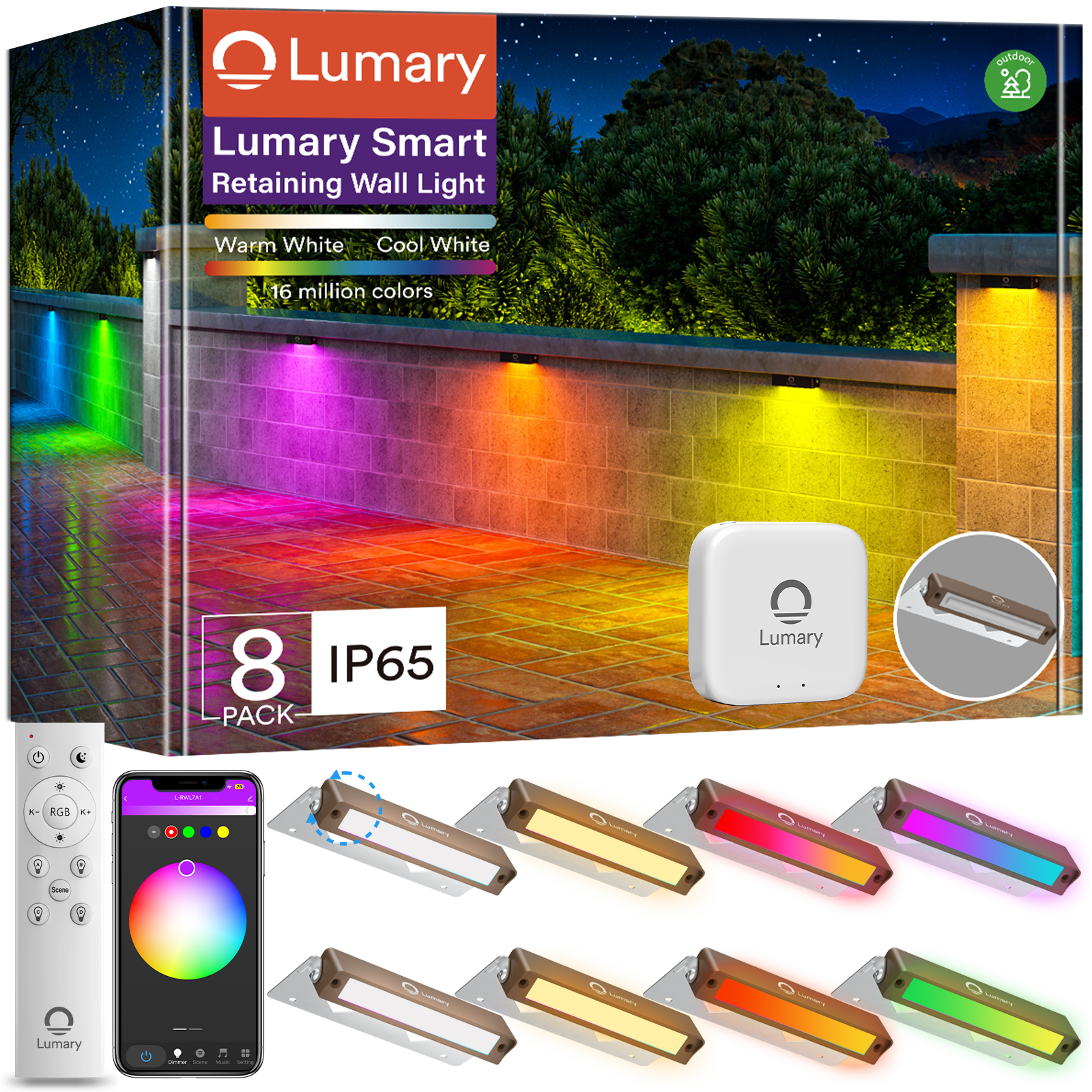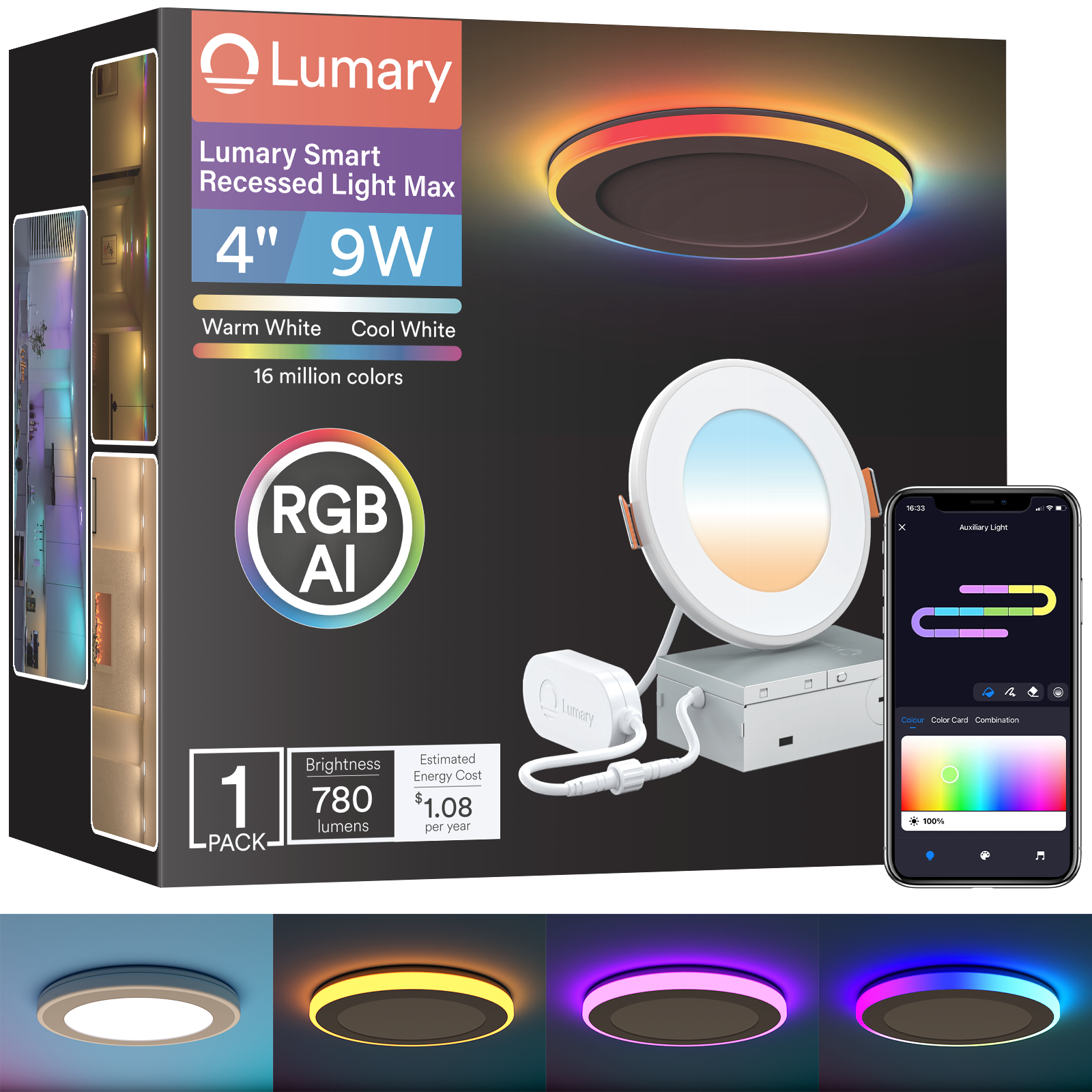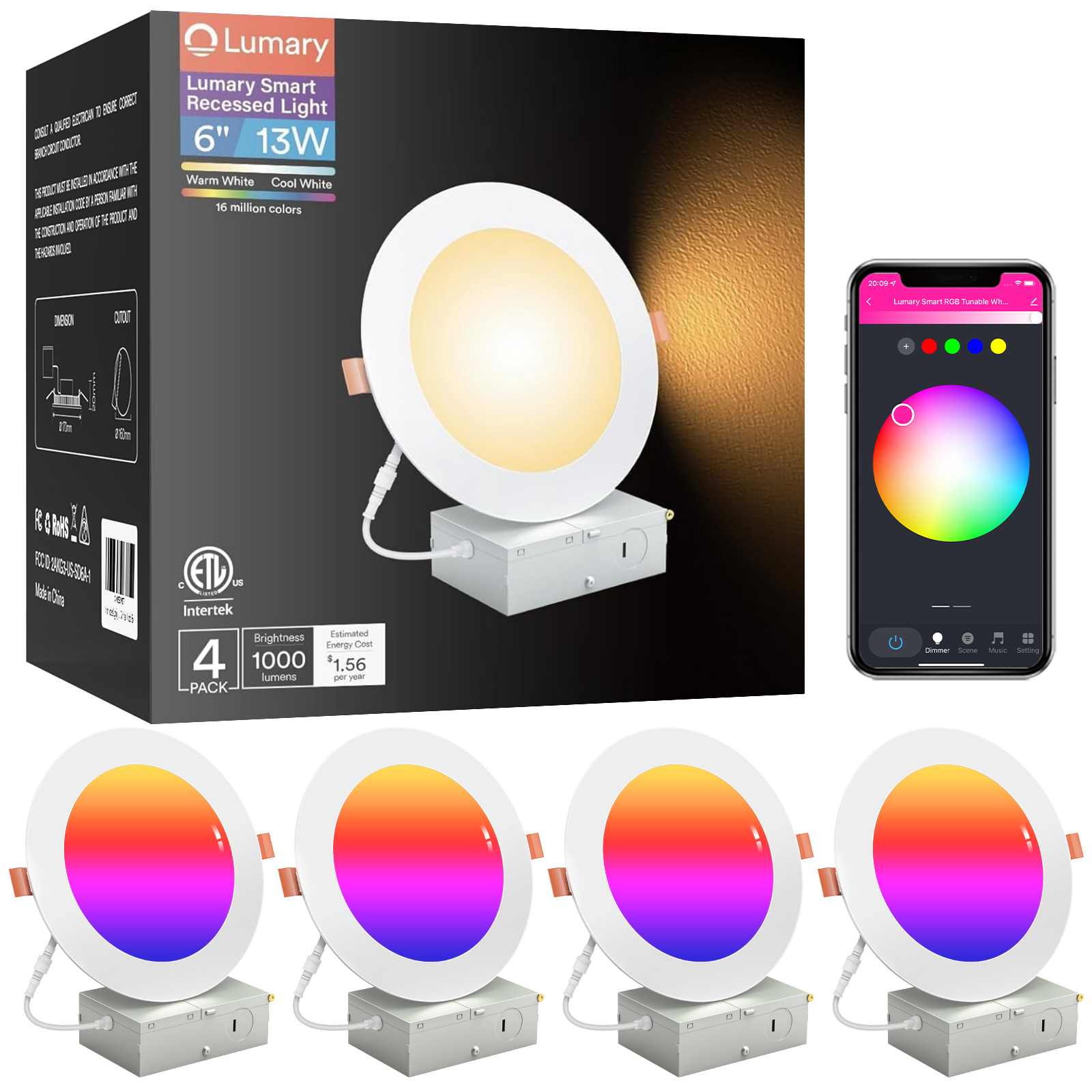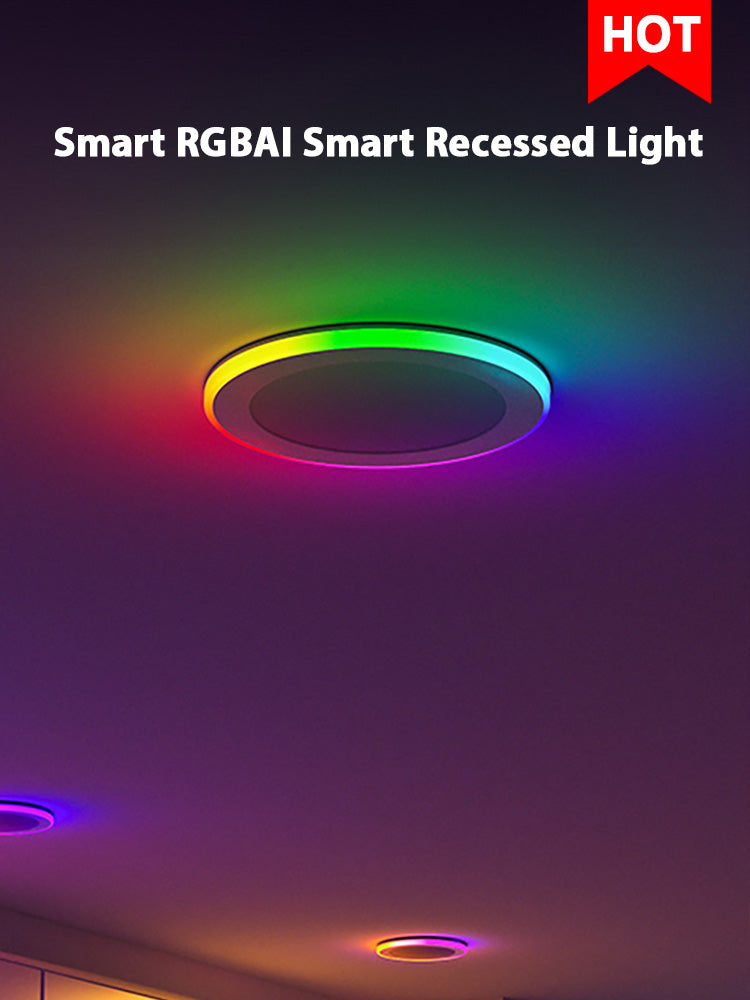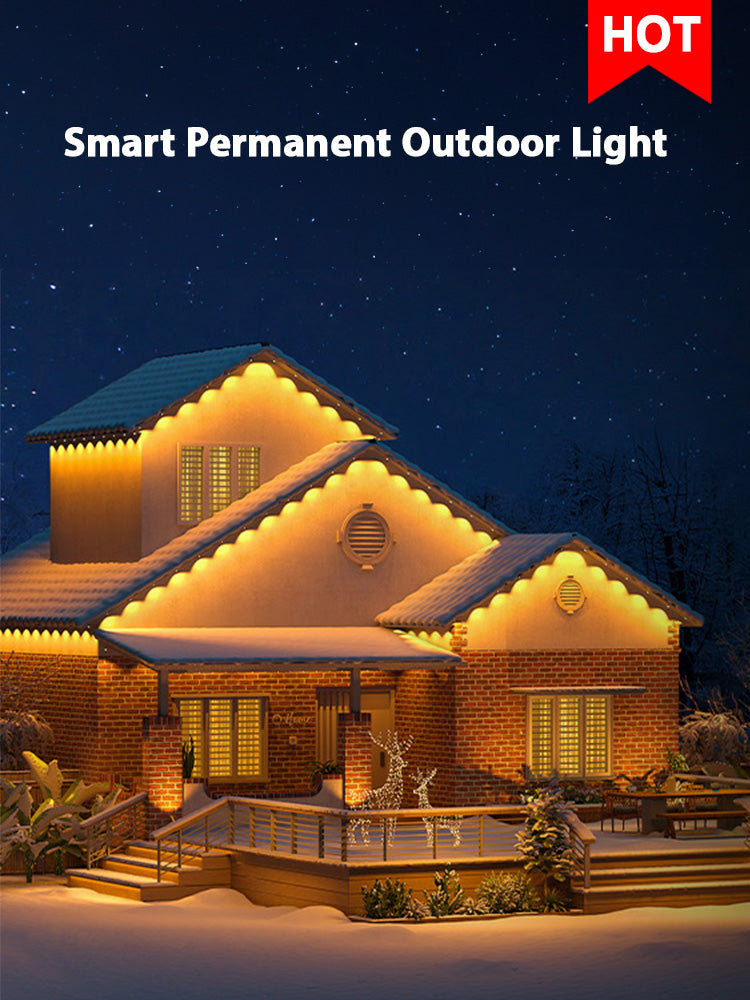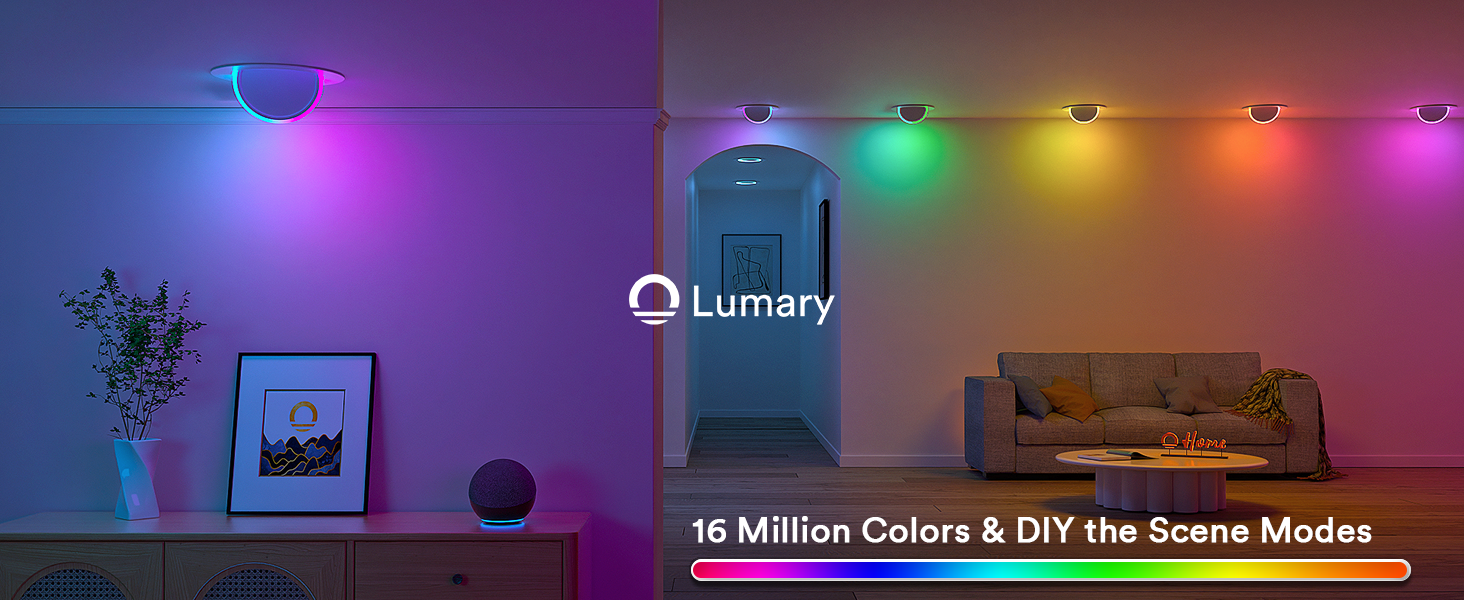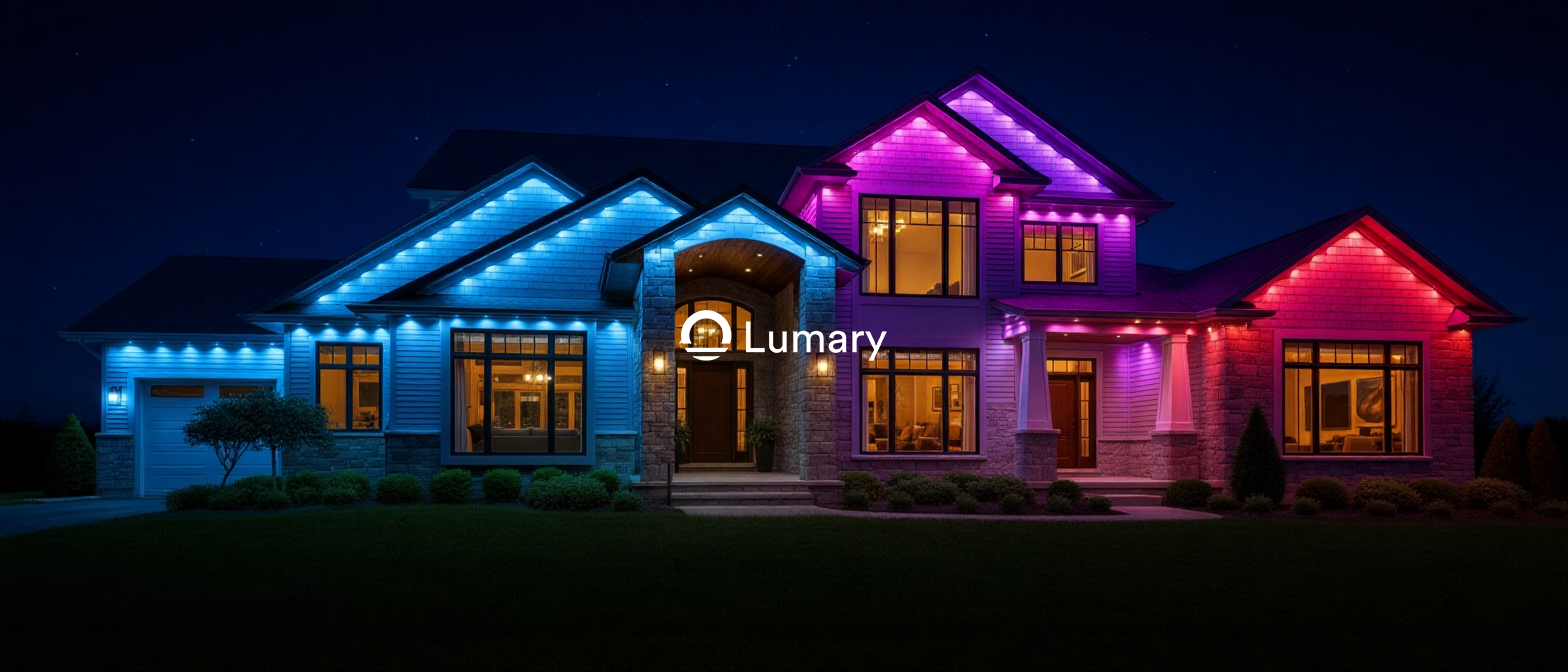Thinking about putting in recessed lights can feel a bit overwhelming at first. You might wonder if installation is tricky or if you need special skills. The answer really depends on your ceiling type, wiring setup, and the product you pick. Many people find that with smart products like the Lumary Smart Recessed Light Pro, the process gets much easier. This light comes with a canless design and simple controls. When you plan ahead, gather the right tools, and focus on safety, you can handle the job and transform your space with modern lighting.

Key Takeaways
-
Check what kind of ceiling you have first. Drywall is simple to use. Plaster is harder and needs special tools.
-
Get the main tools you need, like a voltage tester and drill. Wear safety gear. Getting ready helps make the job easier.
-
Think about where you want your lights. Each room has a different use. Place lights so there are no shadows.
-
Try smart products like the Lumary Smart Recessed Light Pro. These have no can and are easy to control. They make installing and using lights easier.
-
Safety is very important. Always turn off the power before you start. Follow electrical rules to stay safe.
Installation Difficulty Factors
Ceiling Type and Structure
Your ceiling type matters a lot when you put in recessed lights. Drywall ceilings are common. They are usually easier to work with. You need to measure well so the hole fits the light. Plaster ceilings are thicker and harder to cut. You may need special tools for these ceilings.
How thick your ceiling is can change your lighting plan. Plaster needs special fixtures made for accuracy and good results.
Check your ceiling before you start. Here’s a simple way to do it:
-
Pick the best way to install for that ceiling.
-
Choose a recessed light that matches your ceiling.
The Lumary Smart Recessed Light Pro helps make this step easy. Its canless design means you do not need a big can in the ceiling. This works for both drywall and plaster. You get all the parts you need in the box. This saves you time and trips to the store.
Wiring Access
Getting to the wires is another big part of installing. Some ceilings let you reach wires from the attic. Others do not. If you can get to the wires from above, it is easier to run cables and connect lights. If not, you may have to work from below, which is harder.
Some common problems are:
-
Electrical or building issues that make things tough.
-
Cutting holes without hitting wires or pipes.
-
Making sure the lights are safe and look neat.
-
Watching for insulation and airflow to stop energy loss and fire.
The Lumary Smart Recessed Light Pro helps here too. Its slim, canless shape fits in small spaces. You do not need much room above the ceiling. The wiring connectors in the box help you hook up the light fast and safe.
Planning and Design
Good planning makes putting in recessed lights easier. Think about how you want each room to feel. Kitchens need bright, even light. Bedrooms might need softer light.
Here are some things to think about:
-
What the room is for: Each room needs different light.
-
Where to put the lights: Place them to stop shadows and give even light.
-
Electrical rules and codes: Always check local rules to stay safe.
-
Ceiling type: Know if you have drywall or something else. This changes how hard the job is.
-
Ceiling height: Tall ceilings may need more lights or different spacing.
-
Tools and supplies: You need a drill, stud finder, screwdriver, and the right lights and wires.
The Lumary Smart Recessed Light Pro is great for this. You can use your phone or voice to control the lights. You can set colors and scenes. You can group lights together to manage them easily. This smart control lets you change the lights for any mood or activity. It makes planning easier.
Tip: Take your time to plan where each light goes. Measure twice before you cut. Always check your wiring before turning the power back on.
With good planning, the right tools, and an easy-to-use product like the Lumary Smart Recessed Light Pro, you can make installing much simpler and more fun.

Tools and Skills Needed
Before you start the installation process, you need to gather the right tools and make sure you have the skills to work safely. Installing recessed lights can feel simple if you prepare well. Let’s break down what you’ll need.
Essential Tools
You want to have the right tools on hand to make your job easier and safer. Here’s a list of what you should grab before you begin:
-
Needle-nose pliers
-
Non-contact voltage tester
-
Pliers
-
Stepladder or sturdy ladder
-
Wire stripper/cutter
-
Phillips and flat-head screwdrivers
-
Drill with drill bits
-
Measuring tape
Each tool helps you with a different part of the installation. For example, a voltage tester lets you check that the power is off, so you avoid shock. A ladder helps you reach the ceiling safely. Wire strippers and pliers make it easy to handle wires and connect everything securely.
Tip: Lay out your tools before you start. This keeps the installation process smooth and helps you avoid mistakes.
Electrical Knowledge
You don’t need to be an electrician, but you should know some basics about recessed lighting. You must follow electrical codes and safety standards. Make sure your wiring matches the load and is grounded properly. Always check that your recessed lights work with your home’s voltage. If you’re not sure about any step, ask a professional or look up local codes.
-
Follow all electrical codes and safety rules.
-
Use the right wires and make sure they are grounded.
-
Double-check that your lights match your circuit voltage.
Safety Gear
Safety comes first when you work with electricity. You should always wear:
-
Safety glasses to protect your eyes from dust or debris.
-
Gloves to keep your hands safe from sharp edges and wires.
These simple items help you avoid injury and make the installation much safer. When you use smart products like the Lumary Smart Recessed Light Pro, you’ll find that many steps are easier, but you still need to stay safe and follow the right steps for recessed lighting.
Recessed Lights Installation Steps
Are you ready to put in recessed lights? Let’s go through each step together. You will see how the Lumary Smart Recessed Light Pro helps make things easier. Its smart features and canless design save time.
Measuring and Marking Cutouts
Picking the right spot for your recessed lights is important. You want your room to look bright and even. Here is how you measure and mark your ceiling:
-
Plan the layout. Think about how you want your lights to look. Draw a simple plan on paper.
-
Measure the area. Use a measuring tape to check your ceiling size. Decide how many recessed lights you need and where they should go.
-
Mark the ceiling. Use a pencil to mark each spot for your fixtures. This helps you see where each light will be.
Tip: Check your measurements twice before you cut anything. It is much easier to erase a pencil mark than fix a hole.
Cutting Ceiling Openings
Now you can cut the holes for your recessed lighting. Be careful not to hit wires or damage the ceiling. Here are some tips:
-
Keep wires behind cut-out rings or inside boxes.
-
Leave a little extra wire and hold it with insulated staples.
-
Use a laser pointer to mark spots on the floor. This helps you cut straight and avoid wires.
-
Start from the easiest place, like an attic or crawl space.
-
Run wires next to floor joists. This means you make fewer holes.
Always run wires inside the spaces between floor joists. This makes your job easier and stops extra repairs.
The Lumary Smart Recessed Light Pro fits into small spaces because of its canless design. You do not need a big can, so you can cut smaller holes and work faster.
Wiring and Connecting
Wiring is a big part of putting in recessed lights. You want safe connections that work well. Here are some common wiring methods and what they mean:
|
Wiring Technique |
Safety Considerations |
Performance Impact |
|---|---|---|
|
Adherence to electrical codes |
Secure connections and proper grounding |
Reduces risk of electrical failure |
|
Use of high-quality materials |
Minimizes risk of failure over time |
Enhances reliability in high-usage areas |
|
Proper junction box sizing |
Prevents overheating and fire hazards |
Maintains optimal performance by avoiding overcrowding |
-
Pick good connectors for your recessed lighting.
-
Make sure wire nuts are tight so wires do not come loose.
-
Use terminal blocks for strong connections.
-
Look for rust or damage, especially in damp rooms.
Following NEC 314.16 helps you know how much space you need for wires and devices. If you follow this rule, you stop overheating and keep your recessed lights safe.
The Lumary Smart Recessed Light Pro comes with easy wiring connectors. You can connect the light quickly and safely. The instructions show you each step, so you do not have to guess.
Securing Fixtures
After wiring, you need to secure your recessed lights. You want them to sit flat and stay in place. Here is what you do:
-
Push the fixture gently into the hole.
-
Use the clips or springs to lock it in place.
-
Make sure the fixture is tight and does not move.
With Lumary recessed lights, the canless design and mounting hardware make this step easy. You do not need extra brackets or tools. The fixture fits in the hole and stays put.
Now you get to set up your smart controls! The Lumary Smart Recessed Light Pro lets you use the Lumary app or voice assistants like Alexa and Google Assistant. You can change brightness, color, and scenes with a tap or your voice.
Here is a quick look at smart setup versus traditional installation:
|
Aspect |
Traditional Installation |
|
|---|---|---|
|
Installation Complexity |
Simple replacement of bulbs or switches |
Often requires professional assistance |
|
Integration with Technology |
Compatible with apps and voice assistants |
Limited to manual controls |
|
User Guidance |
User-friendly apps guide the setup process |
Typically lacks guidance, requiring expertise |
Note: With Lumary’s app, you can group lights, set scenes, and sync your lighting to music. The memory function saves your favorite settings, so you always get the look you want.
You have finished installing recessed lighting. With careful measuring, safe wiring, and smart controls, you can enjoy great light in any room. The Lumary Smart Recessed Light Pro makes installing recessed lights easier and more fun, whether you upgrade your living room, kitchen, or bedroom.
Common Recessed Lighting Challenges
When you put in recessed lighting, you may face some problems. Knowing these problems helps you avoid mistakes and keeps your home safe.
Wiring Errors
Wiring mistakes can cause trouble with recessed lighting. Here are some things that can happen:
-
Trim can sag and show parts of the fixture. This can cause electrical trouble or even start a fire.
-
Sometimes lights turn off by themselves. This may mean the fixture gets too hot. It often happens if you use the wrong bulb or if insulation touches the light.
-
Lights that blink or flicker can mean there is a problem with the thermal protection device in the wiring.
-
If a bulb or socket burns out, the fixture may stop working. This can mean there is a wiring issue.
Always turn off the power before you start. This keeps you safe from shock.
Poor Fit or Flickering
Your recessed lights may flicker or not fit well. These problems often come from loose connections, bad bulbs, or the wrong dimmer switch. Flickering can also happen if the electric current changes or if the bulb does not match the fixture. To stop this, check that bulbs are tight and connections are secure. Make sure your dimmer switch works with LED bulbs. If you use Lumary Smart Recessed Light Pro, you get a fixture that fits well and dims smoothly. This helps stop flickering.
Insulation Contact Issues
Insulation touching recessed lighting can be unsafe. If you use a fixture that is not IC-rated, insulation can make it too hot and start a fire. Non-IC-rated fixtures need space—about three inches—from anything that can burn. Many new lights, like Lumary, have safety features for this. You should:
-
Use IC-rated fixtures if your ceiling has insulation.
-
Put in the lights with the right space around them.
-
Pick lower wattage LED bulbs to keep things cool.
IC-rated fixtures help prevent fires and work safely with insulation.
Incorrect Bulb or Fixture Choice
Choosing the wrong bulb or fixture can hurt performance, safety, and how your room looks. Here is a quick guide:
|
Mitigation Strategies |
|
|---|---|
|
Bad performance |
Plan ahead and pick parts that work together |
|
Safety problems |
Follow the instructions from the manufacturer |
|
Style mismatches |
Learn about brands and check wattage and color temperature |
If you pick Lumary recessed lights, you get clear instructions and many color and brightness choices. This makes it easy to match your style and keep your lighting safe.
Safety and Compliance for Recessed Lighting
When you put in recessed lighting, safety is very important. You must follow rules to keep your home and family safe. It is easy to forget about safety when you get excited about new lights. But you need to take the right steps to protect everyone.
Electrical Hazards
Electricity can be dangerous if you do not pay attention. You could get shocked, burned, or fall if you are not careful. Here are some common risks:
-
You can get shocked if you touch live wires. Always turn off the power at the breaker first. Use a voltage tester to check that the power is off.
-
Falling from ladders happens a lot. Use a strong ladder and ask someone to help hold it steady.
-
Fires can start if you use broken wires or put too much on one circuit.
To stay safe, do these things:
-
Use good tools that work well.
-
Wear safety gear like gloves and glasses.
Never leave wires open or skip wiring rules. Always work in dry places. Double-check that the power is off before you touch any wires.
Fire Safety
Recessed lights make holes in your ceiling. If you do not install them right, fire can move fast through these gaps. Some fixtures can melt quickly in a fire. This puts your home in danger. You need to make sure your lights keep your ceiling’s fire rating.
|
Regulation |
Description |
|---|---|
|
International Building Code 714.5.2 |
Recessed fixtures in fire-rated ceilings must keep fire-resistance. |
|
Passive Fire Protection |
Stops heat, smoke, and flames from moving through open spaces. |
The Lumary Smart Recessed Light Pro follows strict safety rules. It is ETL-listed and FCC compliant. This means it is made for safety and quality.
Code Requirements
Building codes help keep your lights safe and up to date. Never skip steps or use shortcuts. Here are some important rules:
|
Code Section |
Requirement Description |
|---|---|
|
2015 IECC/IRC, Section R103.3/R106.3 |
|
|
2015 IECC/IRC, Section R402.4.5/N1102.4.5 |
Recessed lights must be sealed and IC-rated to stop air leaks. |
|
2015 IRC, Section E4003.5 |
Recessed incandescent lights must have thermal protection. |
|
Section E4004.8 |
There must be space between lights and things that can burn. |
|
Section E4004.9 |
Rules for putting insulation around recessed lights. |
Lumary recessed lights are made to meet these codes. They are IC-rated and sealed to stop air leaks. You can trust that your lights are safe and follow the rules.
Tip: Always check your local building codes before you start. If you do not know, ask a licensed electrician for help.
DIY vs. Professional Installation
When DIY Is Feasible
You might wonder if you can handle recessed lighting installation on your own. Many homeowners can, especially with user-friendly products like Lumary recessed lights. These lights come with clear instructions and easy wiring connectors, making the process less stressful. If you feel comfortable with basic electrical work and have the right tools, you can take on this project.
Here’s a simple checklist to help you decide if DIY is right for you:
-
Turn off the power at the breaker and double-check with a voltage tester.
-
Gather insulated tools and a sturdy ladder.
-
Read and follow the manufacturer’s instructions step by step.
-
Make sure you do not overload your circuits.
-
Wear gloves and safety glasses for protection.
If you understand wiring colors and can follow directions, you’ll find the Lumary Smart Recessed Light Pro especially easy to install. The app and voice controls also guide you through setup, so you don’t have to guess.
Tip: Always put safety first. If you feel unsure at any step, it’s okay to ask for help.
When to Hire an Electrician
Sometimes, it’s best to call a professional. If your home has old or damaged wiring, or if you need to run new wires through finished walls or ceilings, an electrician can help you avoid mistakes. High ceilings, heavy fixtures, or hard-to-reach spots also make the job tougher. Professionals know how to protect your home from dust, avoid damaging pipes, and keep everything up to code.
-
Messy drywall cutting
-
Risk of damaging surfaces or hitting pipes
If you run into any of these issues, hiring an electrician keeps your project safe and smooth.
Cost Considerations
DIY can save you money. You might save $75 to $200 per light on labor. Professional installation usually costs $125 to $300 per light, including materials. But remember, you may need to buy tools or permits for DIY. Sometimes, the total cost ends up close to what you’d pay a pro. Electricians also finish the job much faster, which can save you time and stress.
|
Installation Type |
Average Cost per Light |
Time Needed |
|---|---|---|
|
DIY |
$0–$200 (labor only) |
Longer (learning + doing) |
|
Professional |
$125–$300 (all in) |
3–4x faster |
Think about your skills, your budget, and your comfort with electrical work. If you want a quick, safe job, a professional is a good choice. If you enjoy learning and want to save money, DIY with Lumary recessed lights is a great option.
When you put in an embedded ceiling lamp, you may run into problems. Ceiling height, wiring, and mounting can be tricky. Smart lights like the Lumary Smart Recessed Light Pro help a lot. They have easy controls and many features. Think about your skills with electrical work before you begin. Look at your ceiling type too. If you are not sure, get help from a professional. Always turn off the power before you start. Use the right tools to keep safe.
|
Feature |
Lumary Smart Recessed Light Pro |
Traditional Fixtures |
|---|---|---|
|
Smart controls & color options |
✅ |
❌ |
|
Easy installation |
✅ |
❌ |
|
Energy-efficient |
✅ |
Varies |
Safety comes first—if you are unsure, call an expert!
FAQ
How do I control Lumary Smart Recessed Light Pro?
You can use the Lumary app on your phone or give voice commands with Alexa or Google Assistant. The app lets you change colors, brightness, and scenes. You can also group lights and set schedules for different rooms.
Can I install Lumary recessed lights without attic access?
Yes! The canless design fits in tight spaces. You only need to cut a hole in the ceiling and connect the wires. You do not need extra space above the ceiling. The included connectors make wiring simple.
What makes Lumary recessed lights different from regular lights?
Lumary lights offer smart features like app and voice control, 16 million colors, and music sync. You can adjust brightness and color temperature. The memory function saves your favorite settings. These lights are also energy-efficient and easy to install.
Are Lumary recessed lights safe to use with insulation?
Yes, they are IC-rated. You can place them in ceilings with insulation without worry. The lights meet ETL and FCC safety standards. This helps protect your home from overheating and fire risks.
Do I need special bulbs for Lumary Smart Recessed Light Pro?
No, you do not need separate bulbs. The LED is built in. You get long-lasting light with over 25,000 hours of use. You can adjust the color and brightness right from your phone or with your voice.

